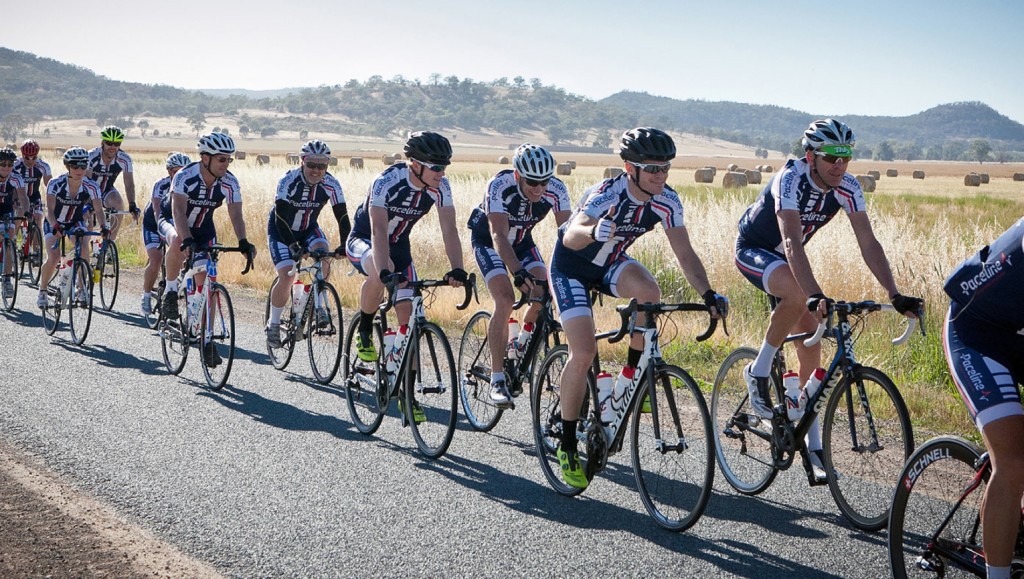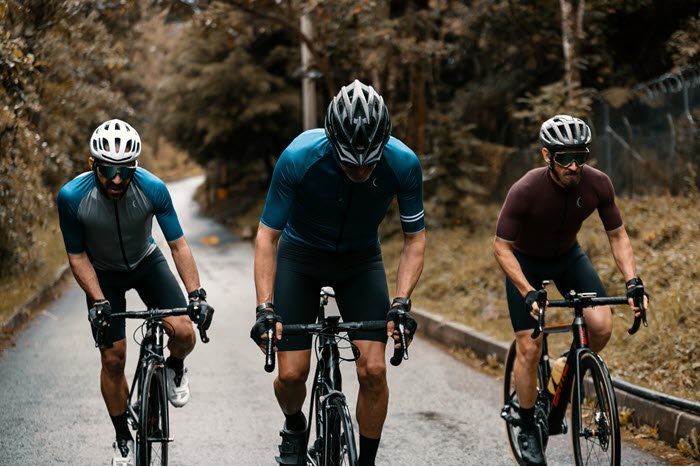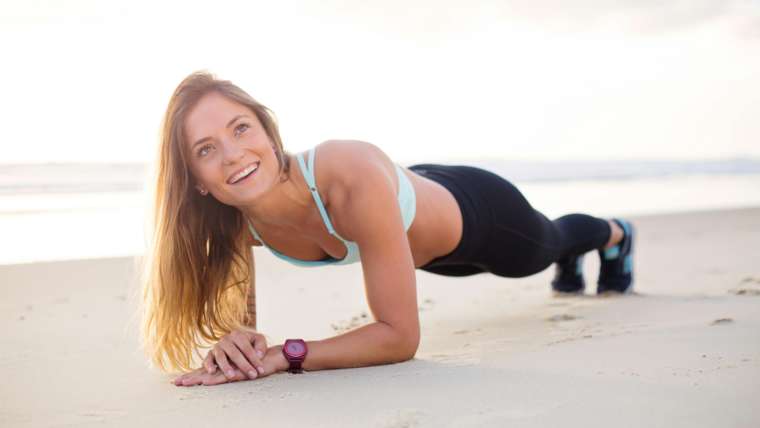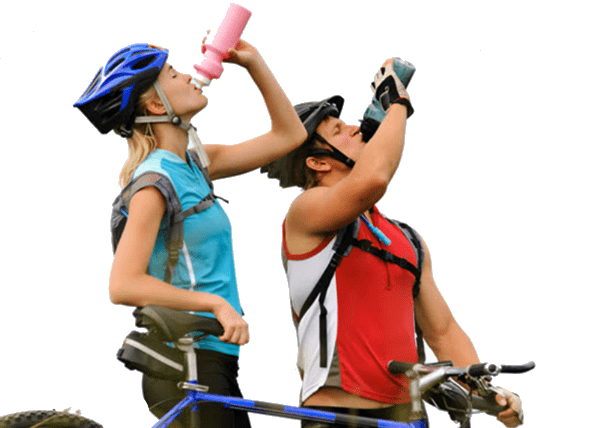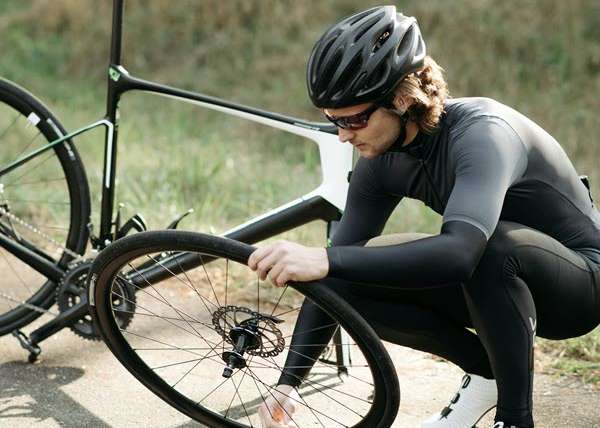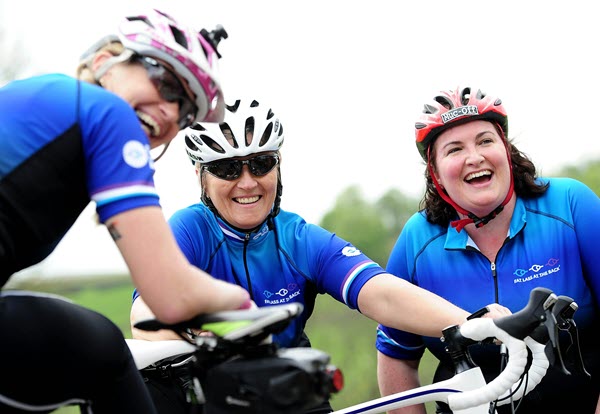Contents
- 1 Mastering Your First Century Ride
- 1.1 Getting Started: Understanding a Century Ride
- 1.2 Preparing Your Body: Training Tips
- 1.3 The Right Gear: What You Need
- 1.4 Nutrition and Hydration: Fueling Your Ride
- 1.5 Planning Your Route: Where to Ride
- 1.6 Mental Preparation: Getting Your Head in the Game
- 1.7 Day of the Ride: What to Expect
- 1.8 On the Road: Handling Challenges
- 1.9 Post-Ride Care: Recovery Tips
- 1.10 Additional Resources
- 1.11 Conclusion
Mastering Your First Century Ride
Welcome to the Century Club! Embarking on your first century ride isn’t just about logging 100 miles it’s about pushing your limits, embracing the challenge, and savoring the exhilarating sense of achievement. Imagine the wind on your face, the rhythmic cadence of your pedaling, and the breathtaking scenery whizzing by as you conquer mile after mile.
Cycling a century is more than just a ride—it’s a rite of passage that tests your endurance, strength, and mental fortitude. This 100-mile journey demands disciplined preparation, refining technique, and mastering the art of pacing strategies. It’s a profound mental challenge, requiring focus and motivation over long distances, where cyclists often discover their true grit. The sense of accomplishment upon completing a century ride is unparalleled, celebrating the journey, small victories, and the community of fellow cyclists.
Whether you’re a seasoned cyclist looking to reach new heights or a passionate beginner ready to tackle this iconic milestone, mastering your first century ride is a journey of preparation, perseverance, and pure joy. So, gear up, get ready to sweat, and let’s dive into the essential cycling tips that will transform your century ride from a daunting dream into a triumphant reality. Ready to ride? Let’s hit the road!
Getting Started: Understanding a Century Ride
What Exactly is a Century Ride?
A century ride, in the cycling world, is the impressive feat of covering 100 miles in a single ride. It’s a challenge that calls for both physical prowess and mental tenacity. Unlike your typical weekend road cycling, a century demands careful planning and sustained effort. The cycling routes can vary from rolling countryside to urban landscapes, each offering its own unique set of challenges and rewards. Whether you’re cruising along scenic coastal roads or tackling hilly terrains, the essence of a century ride remains the same: it’s a testament to a cyclist’s endurance and determination.
The Benefits of Completing a Century Ride
Completing a century ride brings a multitude of benefits that extend beyond the satisfaction of ticking off a bucket-list item. Physically, it elevates your fitness to new heights. The rigorous training and the ride itself build cardiovascular strength, muscle endurance, and overall stamina. Each pedal stroke contributes to a stronger, more resilient body.
But the advantages aren’t purely physical. Mentally, a century ride bolsters confidence and resilience. Overcoming the inevitable cycling challenges—be it muscle fatigue, mental fatigue, or unpredictable weather—teaches valuable lessons in perseverance and grit. Every mile conquered is a testament to your ability to push through discomfort and doubt.
Preparing Your Body: Training Tips
Building a Solid Training Plan
Embarking on your first century ride requires more than just enthusiasm—it demands a well-structured bike training plan. Start by gradually increasing your mileage each week, aiming for a mix of shorter rides during the weekdays and longer rides on weekends. Consistency is key. A typical training schedule might span 12 to 16 weeks, giving your body ample time to adapt to the increasing demands. Don’t forget to include varied terrain in your training; this will prepare you for the diverse challenges you might face on the actual ride day. Use tools like a cycling diary or training apps to track your progress and stay motivated.
Essential Workouts for Strength and Endurance

To truly master a century ride, your workouts need to go beyond just riding. Incorporate strength training for cyclists to build muscle endurance and power. Focus on exercises that target your core, legs, and glutes—think squats, lunges, and planks. Interval training is another essential component. These high-intensity workouts improve your cardiovascular fitness and increase your stamina. Try alternating between high-intensity bursts and moderate recovery periods during your rides. Additionally, long, steady-state rides are crucial. These endurance-building sessions will help your body get accustomed to prolonged exertion, making the 100-mile journey more manageable.
Incorporating Rest and Recovery Days
Training hard is important, but so is allowing your body to recover. Rest days are not just breaks; they are integral to your training regime. These days give your muscles time to repair and strengthen, reducing the risk of injury and burnout. Listen to your body—if you feel excessively fatigued or notice any signs of overtraining, it’s okay to take an extra rest day. Active recovery, such as light cycling, yoga, or stretching, can also be beneficial. It helps to keep your body limber and promotes blood flow to your muscles, aiding in faster recovery.
By building a solid training plan, incorporating essential workouts, and prioritizing rest and recovery, you’ll be well-prepared to tackle your first century ride. Your body will be conditioned to handle the physical demands, and you’ll feel confident and ready to conquer those 100 miles.
The Right Gear: What You Need
Choosing the Perfect Bike for Long-Distance Riding
Selecting the right bike is crucial for a successful century ride. You need a bike that’s not only lightweight but also sturdy and comfortable for long hours on the road. Road bikes are typically the go-to choice due to their speed and efficiency. Even though a carbon frame is optimal to reduce weight and absorb road vibrations, a good light weight steel frame can work just as well. Pay attention to the gearing; a wide range will help you tackle varied terrains effortlessly. Don’t forget to get a professional bike fit. A well-fitted bike can prevent discomfort and injuries, making those 100 miles feel a lot more manageable.
Must-Have Accessories for Your Century Ride
Equipping your bike with the right accessories can make a world of difference. Start with a reliable bike computer or GPS navigation for cyclists to track your distance, speed, and route. Hydration is key, so invest in high-capacity water bottles or a hydration pack. For safety, a good set of lights and a bell are essential, especially if parts of your ride are in low-light conditions. A saddlebag stocked with essentials like spare tubes, a mini pump, tire levers, and a bike repair kit can save you from being stranded by the roadside. Don’t overlook comfort-enhancing accessories like padded handlebar tape and a well-cushioned saddle.
Clothing and Footwear: Comfort is Key
Wearing the right clothing and footwear can significantly enhance your riding experience. Invest in a high-quality cycling jersey and bib shorts. Bib shorts are much more comfortable than regular shorts and will not ride down or curl under. Look for moisture-wicking fabrics that keep you dry and comfortable. Padded shorts are a must to prevent saddle sores during long rides. Layering is also important; arm warmers and a lightweight jacket can help you adapt to changing weather conditions. Proper cycling shoes with stiff soles improve pedaling efficiency and reduce foot fatigue. Don’t forget a good pair of cycling gloves to protect your hands and enhance grip, and a helmet for bike safety, of course.
Having the right gear can make or break your century ride experience. A well-chosen bike, essential accessories, and comfortable cycling apparel ensure that you’re not just riding but enjoying every mile of the journey. With the right preparation, you’ll be ready to tackle any challenge that comes your way and truly master your first century ride.
Nutrition and Hydration: Fueling Your Ride
Pre-Ride Nutrition: What to Eat the Night Before
The night before your century ride is crucial for ensuring you have the energy to sustain your effort. Focus on a balanced meal rich in carbohydrates, moderate in protein, and low in fats. Carbohydrates are your primary fuel source, so load up on pasta, rice, or sweet potatoes. Pair these with lean proteins like chicken or fish to aid muscle repair and maintenance. Avoid heavy, fatty foods that can cause digestive issues. Hydration starts the night before, so drink plenty of water and consider an electrolyte drink to balance your levels. Think of this meal as the foundation of your endurance.
During the Ride: Staying Hydrated and Energized
Once you’re on the road, maintaining your energy levels and staying hydrated are paramount. Aim to drink small amounts of water frequently, rather than gulping down large quantities at once. A good rule of thumb is the 10/10 rule, drink every 10 minutes and eat every 10 miles. You should adjust this based on temperature and exertion levels. Also, eating after 65 to 75 miles may not help due to digestion times. Gels work the best near the end of the ride. For energy, pack easily digestible snacks like energy gels, bars, bananas, and dried fruit. These provide quick carbohydrates to keep your muscles fueled. Don’t forget to balance your intake with electrolytes, especially if you’re sweating heavily. Sports drinks or electrolyte tablets can help prevent cramping and maintain your performance.
Post-Ride Recovery: Refueling for Optimal Recovery
After crossing the finish line, your focus should shift to recovery. Your muscles will be depleted, and replenishing your glycogen stores is critical. Within 30 minutes of finishing, consume a mix of carbohydrates and protein. A recovery shake, chocolate milk, or a balanced snack like a banana with peanut butter can be effective. Continue to hydrate, but switch to water or a recovery drink that includes electrolytes. Over the next few hours, eat a well-rounded meal with lean proteins, complex carbs, and healthy fats. This approach helps repair muscle tissue, reduces soreness, and prepares your body for future rides.
Proper nutrition and hydration strategies can make all the difference in your century ride experience. By fueling your body correctly before, during, and after the ride, you’ll not only enhance your performance but also ensure a swift recovery, readying you for more cycling adventures ahead.
Planning Your Route: Where to Ride
Finding the Ideal Century Ride Route
The best course of action is to sign up with an organized ride. This will eliminate a lot of the work outlined in the rest of this section, especially if this is your first century ride. Organized century rides often come with ride support and marked courses. If you decide to ride your own route, choosing the perfect route for your century ride is a key part of the ride preparation process.
Look for routes that are known for their scenic beauty, manageable traffic, and well-maintained roads. Websites and apps like Strava or Ride with GPS can help you discover popular century ride routes in your area. Whether you opt for coastal views, rolling countryside, or mountainous challenges, ensure your route matches your fitness level and riding experience.
Understanding Terrain and Weather Conditions
Understanding the terrain is crucial for planning your century ride. Flat routes might seem easier, but they require sustained effort without breaks. Hilly routes provide variety but demand more strength and stamina. When planning your ride, consider your training and choose a terrain that aligns with your preparation. Equally important is checking the weather forecast. Wind, rain, or extreme heat can significantly impact your ride. Dress appropriately for the conditions and be prepared to adjust your plans if the weather turns unfavorable. Knowledge of the terrain and weather conditions helps in anticipating challenges and strategizing your ride effectively.
Mapping Out Rest Stops and Refueling Points
Strategically planning rest stops and refueling points can make your century ride more enjoyable and efficient. Identify safe, convenient locations where you can take short breaks, hydrate, and refuel. Public parks, gas stations, and cafes along your route can serve as excellent rest stops. Plan to stop every 20 to 25 miles, which allows you to break the ride into manageable segments. Use these breaks to stretch, check your gear, and consume snacks or drinks. Knowing exactly where you’ll stop helps in pacing your ride and ensures you stay energized and focused throughout the journey.
Proper route planning is essential to mastering your first century ride. By finding an ideal route, understanding the terrain and weather conditions, and mapping out rest stops, you’ll set yourself up for a successful and enjoyable experience. This thoughtful preparation transforms a daunting challenge into a memorable adventure, highlighting the joy and freedom that cycling brings.
Mental Preparation: Getting Your Head in the Game
Setting Realistic Goals and Expectations
Mental preparation for a century ride is as important as physical training. Start by setting realistic goals and expectations. Recognize that this 100-mile journey is a significant challenge, and it’s okay to break it down into smaller, achievable milestones. Perhaps aim to complete a certain distance each week during your training. On the day of the ride, divide the 100 miles into manageable segments. This strategy helps you stay motivated and focused, turning a daunting distance into a series of attainable targets. Celebrate each milestone, no matter how small, to maintain a positive mindset throughout the ride.
Visualizing Success: Mental Strategies for Endurance
Visualization can be a powerful tool in your mental preparation arsenal. Spend time picturing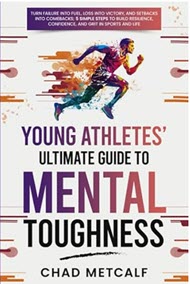 yourself successfully completing the century ride. Imagine the feel of the wind on your face, the rhythm of your pedaling, and the sight of the finish line approaching. This mental rehearsal can boost your confidence and reduce pre-ride anxiety. During the ride, use positive affirmations to keep your spirits high. Remind yourself of your training, your strength, and your determination. When you hit a rough patch, visualize overcoming it and pushing through. This mental imagery can be a great source of motivation and resilience.
yourself successfully completing the century ride. Imagine the feel of the wind on your face, the rhythm of your pedaling, and the sight of the finish line approaching. This mental rehearsal can boost your confidence and reduce pre-ride anxiety. During the ride, use positive affirmations to keep your spirits high. Remind yourself of your training, your strength, and your determination. When you hit a rough patch, visualize overcoming it and pushing through. This mental imagery can be a great source of motivation and resilience.
Overcoming Common Fears and Doubts
It’s natural to have fears and doubts about completing a century ride, especially if it’s your first time. Address these concerns directly. Educate yourself about common challenges, such as fatigue, mechanical issues, or adverse weather conditions. Prepare solutions and strategies for these scenarios. For instance, learn how to fix a flat tire, plan for hydration and nutrition, and understand how to adjust your pace based on the terrain and weather. Surround yourself with supportive people who can encourage and reassure you. Remember, every cyclist started somewhere, and overcoming these fears is part of the journey. Embrace the unknown and trust in your preparation.
Mental preparation is crucial for mastering your first century ride. By setting realistic goals, visualizing success, and overcoming common fears and doubts, you’ll build the mental fortitude needed to tackle this epic challenge. This mental strength, combined with your physical training, will help you not only complete the ride but also enjoy the experience, making your achievement even more rewarding.
Day of the Ride: What to Expect
Pre-Ride Checklist: Last-Minute Preparations
The day of your century ride has arrived, and last-minute preparations are crucial for a smooth start. Begin by double-checking your gear. Ensure your bike is in top condition: tires properly inflated, brakes working perfectly, and the chain well-lubricated. Pack your essentials—spare tubes, a mini pump, multi-tool, and a fully charged phone. Hydrate well, and have a hearty but not heavy breakfast. Dress appropriately for the weather, layering if necessary. Apply sunscreen, even if it’s cloudy, and don’t forget your helmet and cycling gloves. A thorough pre-ride check can prevent small issues from turning into major setbacks.
The Importance of a Proper Warm-Up
A proper warm-up is vital to prepare your body for the long ride ahead. Start with light, dynamic stretches to loosen your muscles. Then, spend 10-15 minutes cycling at a low intensity. This gets your blood flowing, raises your heart rate, and primes your muscles for the exertion to come. Warming up reduces the risk of injury and helps improve your performance. It’s tempting to start strong and fast, but easing into the ride with a proper warm-up sets a steady pace and ensures your body is ready for the endurance challenge.
Pacing Yourself: Starting Slow and Steady
Pacing is everything in a century ride. The excitement and adrenaline at the start can lead you to push too hard too soon. Resist this urge. Begin at a comfortable, moderate pace, conserving your energy for the latter stages of the ride. Use the first 20-30 miles to find your rhythm. Listen to your body and keep a steady cycling cadence. Remember, it’s not a race but a test of endurance. Monitor your energy levels and adjust your pace accordingly. Taking it slow and steady in the beginning helps ensure you have the stamina to finish strong.
By following a pre-ride checklist, properly warming up, and pacing yourself, you’ll set a solid foundation for a successful century ride. These strategies help you manage the long distance effectively, keeping you comfortable and focused throughout the journey. Enjoy the ride, savor the experience, and relish every mile conquered on your path to mastering your first century ride.
On the Road: Handling Challenges
Dealing with Fatigue: How to Push Through
Fatigue is inevitable on a century ride, but knowing how to manage it can make all the difference. First, listen to your body. When you start to feel tired, take short breaks to stretch and refuel. Eat small, energy-boosting snacks like bananas or energy bars to keep your glycogen levels up. Hydrate consistently; dehydration can exacerbate fatigue. Mentally, break the ride into smaller segments and focus on one section at a time. Positive self-talk and visualization can also help push through tough moments. Remember, everyone experiences fatigue—pushing through it is part of the journey.
Safety should always be your top priority on the road. Stay vigilant and aware of your surroundings. Always signal your intentions to other road users with clear hand signals. Keep to the right side of the road and use bike lanes whenever possible. When approaching intersections or high-traffic areas, make eye contact with drivers to ensure they see you. Wear bright, reflective clothing to increase visibility, especially in low-light conditions. Be cautious of road hazards like potholes, debris, and wet surfaces. Anticipate and react calmly to unexpected situations to maintain control and safety throughout your ride.
Managing Mechanical Issues: Quick Fixes on the Fly
Mechanical issues can strike at any time, but being prepared can turn a potential disaster into a minor hiccup. Familiarize yourself with basic bicycle maintenance and repairs. Carry a multi-tool, spare tubes, a patch kit, and a mini pump. If you get a flat, find a safe spot to stop and quickly replace or patch the tube. For a slipping chain, use your multi-tool to adjust the derailleur. If you encounter brake issues, tighten the brake cables or adjust the brake pads as needed. Regular maintenance before your ride can minimize these issues, but knowing how to handle them on the fly keeps you rolling smoothly.
Handling challenges on the road is part of the century ride experience. By managing fatigue, staying safe, and being prepared for mechanical issues, you’ll navigate these obstacles with confidence. Each challenge overcome adds to your sense of accomplishment, making your first century ride not just a test of endurance but a testament to your resilience and preparedness.
Post-Ride Care: Recovery Tips
Cooling Down: Stretching and Relaxation Techniques
After conquering 100 miles, your body needs proper cooling down to aid recovery. Start with gentle, dynamic stretches to relax your muscles and prevent stiffness. Focus on your legs, back, and shoulders, as these areas take the most strain during the ride. Incorporate deep breathing exercises to help lower your heart rate gradually. Light yoga poses can also be beneficial—think downward dog and child’s pose. After stretching, spend a few minutes walking to keep the blood flowing and prevent lactic acid buildup. Cooling down helps your body transition from intense activity to rest, promoting overall recovery.
Post-Ride Nutrition: Replenishing Your Body
Refueling after a century ride is crucial for recovery. Within 30 minutes of finishing, consume a mix of carbohydrates and protein to replenish glycogen stores and repair muscle tissue. A recovery shake, smoothie, or a simple snack like a banana with peanut butter can be effective. Continue hydrating with water or an electrolyte drink to replace lost fluids and minerals. In the following hours, enjoy a balanced meal rich in lean proteins, whole grains, and plenty of vegetables. Proper post-ride nutrition speeds up recovery, reduces muscle soreness, and prepares your body for future rides.
Reflecting on Your Achievement: Celebrating Your Success
Completing your first century ride is a monumental achievement—take time to celebrate it! Reflect on your journey, from the initial training sessions to crossing the finish line. Acknowledge the hard work, determination, and perseverance that brought you here. Share your accomplishment with friends, family, or fellow cyclists; their support and congratulations can make your success even sweeter. Consider keeping a journal to document your experience and the lessons learned. Celebrating your success not only boosts your confidence but also motivates you for future challenges. You’ve joined the ranks of century riders—revel in your accomplishment and look forward to many more miles of cycling adventures.
Taking care of your body and mind after a century ride ensures you recover well and can enjoy the fruits of your labor. Cooling down properly, refueling with the right nutrition, and celebrating your success are essential steps in this process. You’ve mastered your first century ride—now bask in the glory of your achievement and get ready for the next adventure on the open road.
Additional Resources
Recommended Books and Websites for Cyclists
Expanding your knowledge can significantly enhance your cycling experience. There are countless books and websites dedicated to cycling that offer valuable insights, tips, and inspiration. Some recommended reads include “The Cyclist’s Training Bible” by Joe Friel, which provides comprehensive training plans and advice, and “Eat, Race, Win” by Hannah Grant, offering nutrition tips tailored for endurance athletes. Websites like Cycling Weekly, BikeRadar, and GCN (Global Cycling Network) are excellent resources for the latest news, gear reviews, and training tips. These resources can help you stay informed and motivated as you continue your cycling journey.
Joining Local Cycling Clubs and Events
Cycling is not just a solo endeavor; it’s a community. Joining a local cycling club can provide you with a support network of like-minded individuals. Clubs often organize group rides, which can be a fantastic way to improve your skills and make new friends. Look for events like charity rides, local races, and organized century rides. Participating in these events adds variety to your training and offers a sense of camaraderie. Websites like Meetup and local bike shops can help you find clubs and events in your area. Immersing yourself in the cycling community can enhance your riding experience and keep you motivated.
Seeking Professional Advice: Coaches and Trainers
For those looking to take their cycling to the next level, seeking professional advice can be incredibly beneficial. Coaches and trainers can provide personalized training plans, technique improvement, and motivational support. They can help you identify strengths and weaknesses, set realistic goals, and track your progress. Whether you’re preparing for another century ride or aiming for competitive racing, a professional’s guidance can make a significant difference. Many trainers offer online coaching, making it accessible no matter where you are. Investing in professional advice is investing in your growth and success as a cyclist.
By utilizing these additional resources, you’ll continue to grow and thrive in your cycling journey. The wealth of knowledge from books and websites, the community spirit of local clubs and events, and the personalized support from coaches and trainers will all contribute to your success and enjoyment on the bike. Keep exploring, learning, and pedaling towards new adventures.
Conclusion
The Joy of Completing Your First Century Ride
There’s an indescribable joy in completing your first century ride. The sense of accomplishment that washes over you as you cross the finish line is unlike any other. It’s a testament to your hard work, dedication, and resilience. Each pedal stroke, every mile conquered, and all the challenges overcome culminate in this moment of triumph. The camaraderie with fellow cyclists, the stunning scenery along the route, and the exhilarating realization of your capabilities make this achievement truly special. You’ve proven to yourself that with determination and preparation, you can reach incredible milestones.
 |
 |
We earn from qualified Amazon purchases with NO cost to you. ANY item that you need or were going to purchased anyway through any of our links, helps support this site. Thank you for your support!


